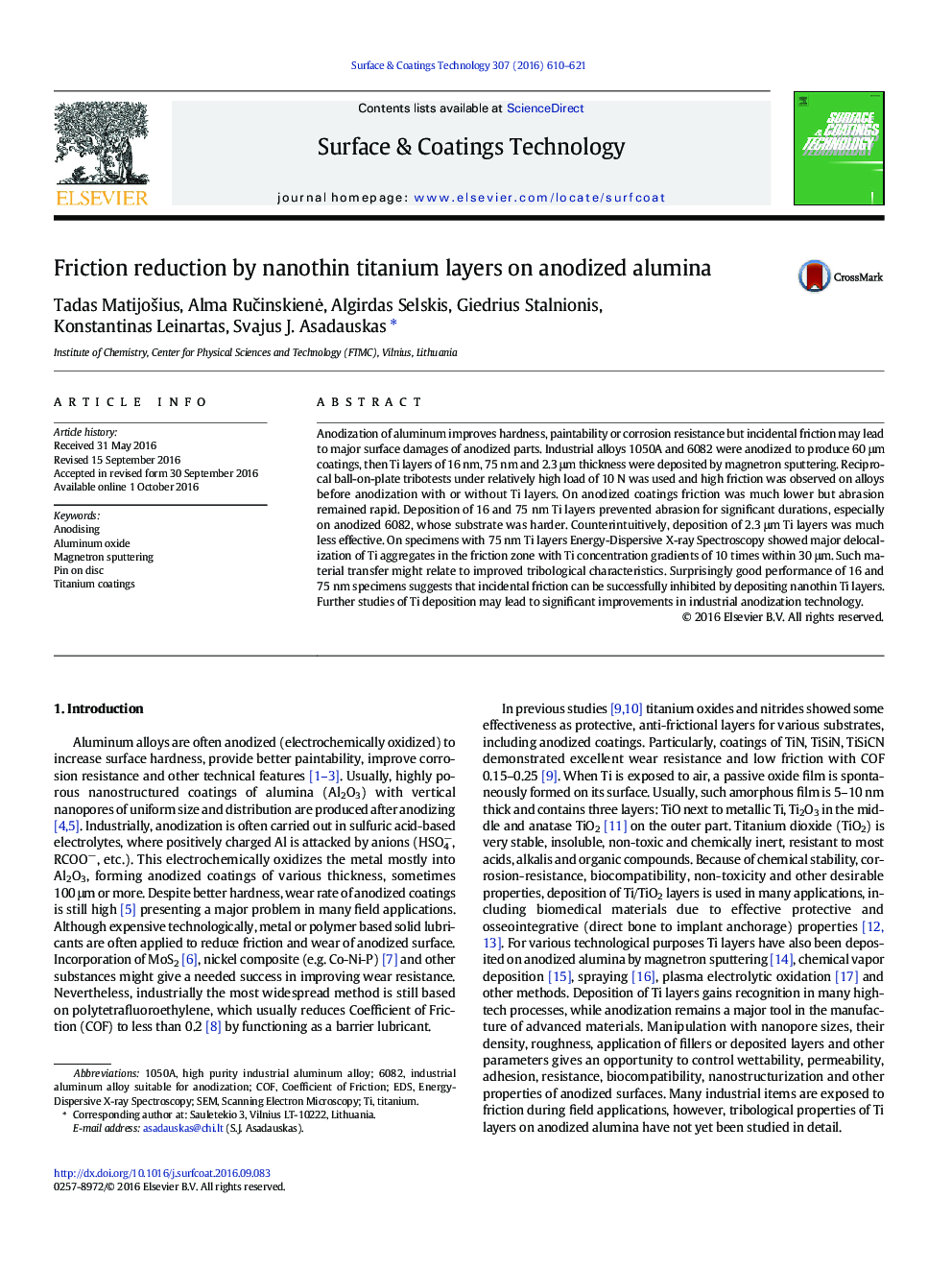| Article ID | Journal | Published Year | Pages | File Type |
|---|---|---|---|---|
| 6481475 | Surface and Coatings Technology | 2016 | 12 Pages |
â¢Abrasion begins immediately on anodized aluminum coatings upon incidental friction.â¢Sputtered Ti layers of 16 and 75 nm inhibited abrasion of anodized coatings.â¢Ti layers of 2.3 μm thickness were not effective, similarly to coatings without Ti.â¢Delocalization of Ti aggregates within wear track might benefit friction reduction.
Anodization of aluminum improves hardness, paintability or corrosion resistance but incidental friction may lead to major surface damages of anodized parts. Industrial alloys 1050A and 6082 were anodized to produce 60 μm coatings, then Ti layers of 16 nm, 75 nm and 2.3 μm thickness were deposited by magnetron sputtering. Reciprocal ball-on-plate tribotests under relatively high load of 10 N was used and high friction was observed on alloys before anodization with or without Ti layers. On anodized coatings friction was much lower but abrasion remained rapid. Deposition of 16 and 75 nm Ti layers prevented abrasion for significant durations, especially on anodized 6082, whose substrate was harder. Counterintuitively, deposition of 2.3 μm Ti layers was much less effective. On specimens with 75 nm Ti layers Energy-Dispersive X-ray Spectroscopy showed major delocalization of Ti aggregates in the friction zone with Ti concentration gradients of 10 times within 30 μm. Such material transfer might relate to improved tribological characteristics. Surprisingly good performance of 16 and 75 nm specimens suggests that incidental friction can be successfully inhibited by depositing nanothin Ti layers. Further studies of Ti deposition may lead to significant improvements in industrial anodization technology.
Graphical abstractDownload high-res image (152KB)Download full-size image
